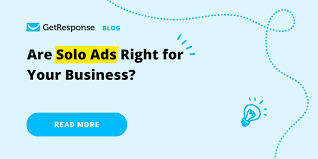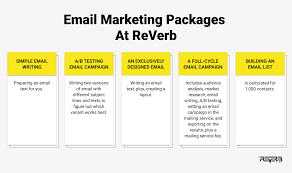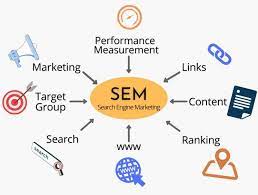Solo ads have become a popular marketing strategy for online businesses looking to increase their visibility and drive traffic to their websites. But what exactly are solo ads, and how do they work?
In simple terms, a solo ad is an email advertisement that is sent to a targeted list of subscribers who are interested in your niche or industry. The ad is usually sent by a third-party provider who has built a large email list of subscribers in your niche.
The key advantage of solo ads is that they allow you to reach a highly targeted audience who are already interested in what you have to offer. This means that the chances of converting these leads into paying customers are much higher than with other forms of advertising.
To get started with solo ads, you need to find a reputable provider who has an email list in your niche. There are many providers out there, so it’s important to do your research and find one that has a good reputation and delivers high-quality leads.
Once you have found a provider, you will need to write an effective email ad that resonates with your target audience. This can be challenging, but it’s essential that you get it right if you want to see results.
Your email ad should be short and to the point, highlighting the benefits of your product or service and encouraging readers to take action. You should also include a clear call-to-action (CTA) that tells readers what they need to do next, whether that’s visiting your website or signing up for your newsletter.
One thing to keep in mind when using solo ads is that not all leads will convert into paying customers. It’s important to track your results carefully and adjust your strategy as needed based on the data.
Overall, solo ads can be an effective way to drive targeted traffic to your website and grow your business. With the right provider and an effective ad campaign, you can reach new customers and increase sales in no time.
8 Essential Tips for Successful Solo Ads Campaigns
- Research the seller
- Know your target audience
- Set realistic expectations
- Test different offers
- Track performance metrics
- Write compelling copy
- Split test emails
- Avoid spammy tactics
Research the seller
When it comes to solo ads, one of the most important tips to keep in mind is to research the seller before making any purchases. This is because not all solo ad providers are created equal, and some may not deliver the results you are looking for.
Before choosing a seller, take the time to read reviews and testimonials from other customers who have used their services. Look for feedback on their website, social media profiles, or online forums related to your industry.
You should also ask the seller for references and examples of previous campaigns they have run. This will give you a better idea of their experience and track record in your niche.
Another important factor to consider when researching a seller is their email list quality. Make sure that they are using a double opt-in process to ensure that subscribers have given explicit permission to receive emails from them. You should also ask about list segmentation and targeting options to ensure that your ad is reaching the right audience.
Finally, don’t forget to check the pricing structure and delivery timeframes offered by the seller. Make sure that you are getting a fair price for high-quality leads, and that your ad will be delivered within a reasonable timeframe.
By taking the time to research sellers before making any purchases, you can ensure that you are getting high-quality leads from a reputable provider who can help you achieve your marketing goals.
Know your target audience
When it comes to using solo ads as a marketing strategy, one of the most important tips to keep in mind is to know your target audience. This means understanding who your ideal customer is and what they are looking for.
Knowing your target audience is essential because it allows you to create an effective ad that resonates with them and encourages them to take action. If you don’t know who your target audience is, you may end up wasting time and money sending ads to people who are not interested in what you have to offer.
To identify your target audience, start by looking at your existing customer base. Who are they? What are their demographics? What problems do they have that your product or service can solve?
You can also use tools like Google Analytics and social media insights to gather data on your website visitors and social media followers. This information can help you build a more complete picture of who your ideal customer is.
Once you have a clear idea of who your target audience is, you can create an ad that speaks directly to them. Use language that resonates with their needs and desires, and highlight the benefits of your product or service in a way that appeals to them.
By knowing your target audience, you can ensure that your solo ad campaign is targeted and effective. You’ll be able to reach the right people with the right message, increasing the chances of converting leads into paying customers. So before launching a solo ad campaign, take the time to identify and understand your target audience – it’s an investment that will pay off in the long run.
Set realistic expectations
When it comes to solo ads, it’s important to set realistic expectations from the start. While solo ads can be a highly effective way to reach a targeted audience and drive traffic to your website, they are not a magic solution that will instantly skyrocket your sales.
It’s important to remember that not all leads will convert into paying customers, and it may take some time to see the results you’re looking for. Setting unrealistic expectations can lead to disappointment and frustration, which can ultimately harm your business.
Instead, focus on setting realistic goals based on your budget, target audience, and industry. Consider factors such as conversion rates and cost per click when setting your goals, and be prepared to adjust your strategy as needed based on the data.
By setting realistic expectations from the start, you can approach solo ads with a clear understanding of what they can realistically achieve for your business. This will help you stay focused on your goals and make informed decisions about how to allocate your marketing budget for maximum impact.
In summary, while solo ads can be a powerful tool for growing your business, it’s important to set realistic expectations and approach them with a clear understanding of what they can realistically achieve. By doing so, you’ll be able to make the most of this valuable marketing strategy and achieve long-term success for your business.
Test different offers
If you’re using solo ads to promote your business, one of the most important things you can do is to test different offers. This means trying out different incentives or promotions to see which ones resonate best with your target audience.
For example, you might try offering a free ebook or report in exchange for signing up for your newsletter. Or you could offer a discount on your product or service for a limited time.
By testing different offers, you can get a better understanding of what motivates your target audience and what types of promotions are most effective at driving conversions.
It’s important to track your results carefully when testing different offers. You should monitor how many clicks and conversions each offer generates and compare the results over time.
Once you have identified which offers are most effective, you can focus on those and refine your strategy further. This will help you optimize your solo ad campaigns and maximize their impact on your business.
In conclusion, testing different offers is an essential part of any successful solo ad campaign. By experimenting with different incentives and promotions, you can gain valuable insights into what motivates your target audience and drive more conversions over time.
Track performance metrics
If you’re using solo ads to promote your online business, it’s important to track your performance metrics to ensure that you’re getting the best possible results. By monitoring your metrics, you can identify areas where your campaigns are succeeding and areas where they need improvement.
One of the most important performance metrics to track when using solo ads is your click-through rate (CTR). This measures the percentage of people who click on the link in your ad and visit your website. A high CTR indicates that your ad is resonating with your target audience and driving traffic to your site.
Another important metric is conversion rate, which measures the percentage of visitors who take a desired action on your website, such as making a purchase or signing up for a newsletter. By tracking this metric, you can identify areas where you may need to improve your website or landing page design to increase conversions.
It’s also important to track your return on investment (ROI), which measures how much revenue you’re generating compared to how much you’re spending on solo ads. This will help you determine whether or not solo ads are a cost-effective marketing strategy for your business.
By tracking these performance metrics and making adjustments as needed, you can optimize your solo ad campaigns for maximum effectiveness. So if you’re using solo ads as part of your marketing strategy, be sure to monitor these metrics closely and use them to inform future campaigns.
Write compelling copy
When it comes to solo ads, one of the most important factors that can make or break your campaign is the copywriting. Your ad copy needs to be compelling and engaging if you want to capture the attention of your target audience and encourage them to take action.
So, what makes for compelling copy? First and foremost, it needs to be focused on the benefits of your product or service. You need to clearly communicate how your offering can solve a problem or meet a need for your target audience.
In addition, your copy should be written in a way that speaks directly to your audience. Use language that resonates with them and shows that you understand their pain points and challenges.
Another important element of compelling copy is a clear call-to-action (CTA). Your CTA should tell readers exactly what they need to do next, whether that’s visiting your website, signing up for a free trial, or making a purchase.
Finally, don’t forget about formatting. Use headlines, subheadings, and bullet points to break up your text and make it easier to read. And make sure that your ad is visually appealing with high-quality images or graphics.
By writing compelling copy for your solo ads, you can increase the chances of capturing leads and converting them into paying customers. Take the time to craft an effective ad campaign with powerful messaging that resonates with your target audience – it will pay off in the long run!
Split test emails
If you’re using solo ads to promote your business, one of the most important things you can do is split test your emails. Split testing, also known as A/B testing, involves sending two different versions of an email to a small portion of your email list and then measuring which version performs better.
The goal of split testing is to determine which elements of your email are most effective at driving conversions. This could include the subject line, the body copy, the call-to-action, or any other element that could impact how readers respond to your email.
To get started with split testing, you’ll need to create two different versions of your email. These should be identical except for one element that you want to test. For example, you might create two versions of an email with different subject lines and send each version to a small portion of your email list.
After sending both emails, you can track the results using metrics like open rates and click-through rates. Once you have enough data, you can determine which version performed better and use that version for the remainder of your email list.
By split testing your emails, you can optimize your campaigns for maximum effectiveness and ensure that every message you send is as impactful as possible. With this strategy in place, you’ll be well on your way to driving more traffic and conversions through solo ads than ever before.
Avoid spammy tactics
When it comes to solo ads, it’s important to remember that not all tactics are created equal. While it can be tempting to use spammy tactics to try and increase your conversion rates, this approach is likely to do more harm than good in the long run.
One of the most important things you can do when using solo ads is to avoid spammy tactics at all costs. This includes things like using misleading subject lines, sending unsolicited emails, or bombarding your subscribers with too many messages.
Not only are these tactics unethical, but they can also damage your reputation and make it harder to build trust with your audience. If people feel like they’re being tricked or manipulated into opening your emails, they’re much less likely to take action or become loyal customers.
Instead of resorting to spammy tactics, focus on creating high-quality content that provides real value to your subscribers. This could include informative blog posts, helpful videos, or exclusive offers that are only available to your email list.
By providing value and building trust with your audience, you’ll be much more likely to see positive results from your solo ad campaigns. And in the long run, this approach will help you build a loyal following of customers who are eager to hear from you and engage with your brand.




